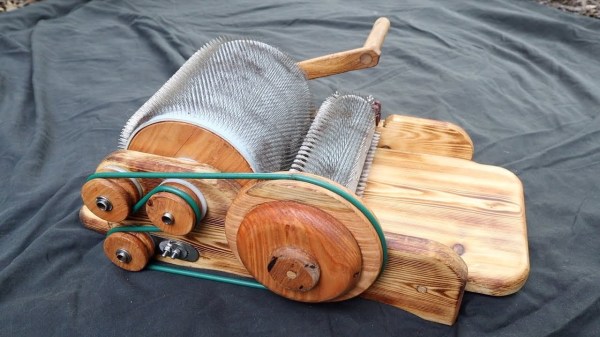Time got a little wibbly wobbly during these pandemic years. Perhaps we would’ve had a more tangible connection to it if [Siren Elise Wilhelmsen]’s knitting clock had been in our living rooms.
Over the course of a year, [Wilhelmsen]’s clock can stitch a two meter scarf by performing a stitch every half hour. She says, “Time is an ever forward-moving force and I wanted to make a clock based on times true nature, more than the numbers we have attached to it.” Making the invisible visible isn’t always an easy feat, but seeing a clock grow a scarf is reminiscent of cartoon characters growing a beard to organically communicate the passage of time.
We’d love some more details about the knitting machine itself, but that seems like it wasn’t the focus of the project. A very small run of these along with a couple prototypes were built, with a knitting grandfather clock now occupying the lobby of The Thief hotel in Oslo.
If you’re looking for more knitting machines, checkout this Knitting Machine Rebuild or Knitting 3D Models Into Stuffies.
Continue reading “Knitting Clock Makes You A Scarf For Next Year”














